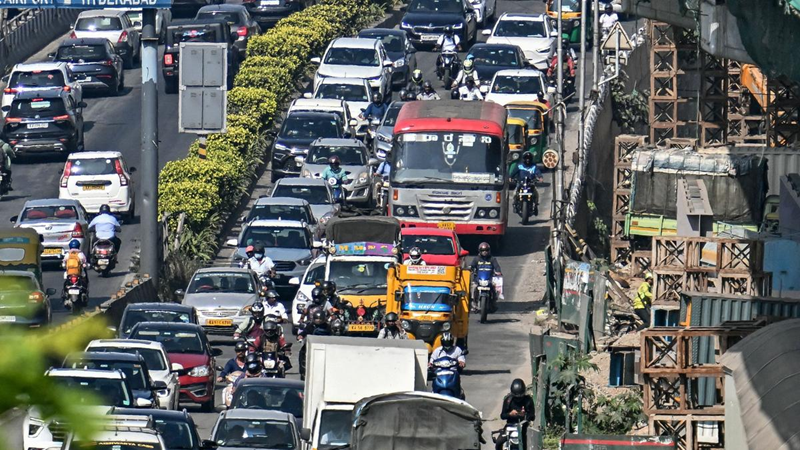
National assets on sale
M. A. Siraj
The new financial year that began on April 1 has brought in its wake new financial burdens for the common man. Fuel prices have kept up the relentless spiral ever since the Assembly elections concluded in the five states. The sting of the price shock from the rasoi gas cylinder is still being felt. But there are many more shocks in store. Toll rates on national highways have already gone up by a minimum of Rs. 10 between every two tolls. Rates will be variable going by the size and comfort the vehicles offer. It can go up to Rs. 65. Prices of life-saving drugs have been hiked by ten per cent from April 1 contrary to the global tradition of making them cheaper. The hike will apply to nearly 800 formulations.
Interests accruing on Provident Fund amount exceeding Rs. 2.50 lakh will now be taxed. Rebates of Rs. 1.50 lakh on housing units less than Rs. 45 lakh is being withdrawn. Those dealing with cryptocurrencies will need to shell out a 30 per cent tax on the turnover. The Government has announced the sale of 1.5 percent of its stake in the Oil and Natural Gas Corporation (ONGC), the nation’s top oil and gas producing company. The Government owns 60.41% stakes in the company. It is expected to yield Rs. 3,000 crore. Altogether over 9.4 crore equity shares of the company will be up for sale.
The Union Government has announced the target of Rs. 45,000 crore for monetization of national assets for the years 2022-23. The target for 2021- 22 was Rs. 1,75,000 crore. Having apprehended failure to reach the target, it was later dragged down to Rs. 78,000 crore. But the gains from monetization till January 2022 (for which the figures are now available), were merely Rs. 45,000 crore.
The latest move raises several questions regarding the fiscal health of the Government. “Is the Government broke?” may be the foremost among them. Economists agree that a silent crisis is in the making ever since the economy came under serial assaults of demonetization, GST, sudden Lockdown and a devastating tax cut of Rs. 1.45 trillion in 2019 without assessing the repercussions. Finding the consistent fall in GDP, the Government must have thought of a slew of new measures to compensate for the shortfall in the revenue by taxing the common men. Fuel price hikes are however the easiest way to spread the net to the commonest men.
Failing to achieve the target in the last fiscal, the Union Government has announced plans to put the landed assets of the CPSUs on sale in the new fiscal. Five companies namely National Land Monetisation Corporation (NLMC); Department of Investment and Public Asset Management (DIPAM); National Investment and Infrastructure Fund (NIIF); Invest India; and, National Monetisation Pipeline (NMP) incorporated last month, will undertake the identification of the assets, clients and affecting the sale.
The monetization follows fiasco the Government has suffered on the disinvestment front. The Air India was sold to the Tatas for merely Rs. 18,000 crore even as it had outstanding debts of Rs. 78,000 crore. NLMC is identifying and assessing the value of assets. Among the assets to be sold are the Bharat Earthmovers Limited (BEML) has 123 acres of land in Bangalore and 401 acres in Mysore. Hindustan Machine Tools (HMT) has 90 acres in Bangalore while the Indian Railways has 11 lakh acres of land across the nation. Of this, the Government would like to dispose of 1.25 lakh acres. The Defence Ministry has over 18 lakh acres of land. Of this, 1.62 lakh acres falls within Cantonments. The Union Govt moots the sale of a considerable chunk of lands outside the cantonments. Besides these, nearly 18 lakh acres of Government land, major focus will be on land belonging to road, railways, mines and power.
The five new companies are hiring personnel from outside the bureaucracy for the identification and execution of the sale of land. Much of the success will depend on the expertise they bring. Focus of monetization is on assets belonging to four sectors namely, power, roads, railways and mines. Of the Rs. 60,000 crore to be pooled through these assets, Rs. 40,000 crore are targeted to come from these sectors.
Significantly, the targets for monetization are not being placed on the Parliament table. The process will be largely opaque. The Opposition parties may be wrong in accusing the Government of ‘legalised loot and organized plunder’ and ‘a surreptitious way of handling of public assets created by previous governments over long decades”. For sure, the assets are not being sold to private establishments. A monetization transaction only means transferring revenue rights to private companies for a specified period in return for upfront money, in lieu of a commitment of investment in the assets.
But opponents do have a point. The Government is wary and reluctant of increasing taxes on the rich,
 English daily published in Bengaluru & Doha
English daily published in Bengaluru & Doha






